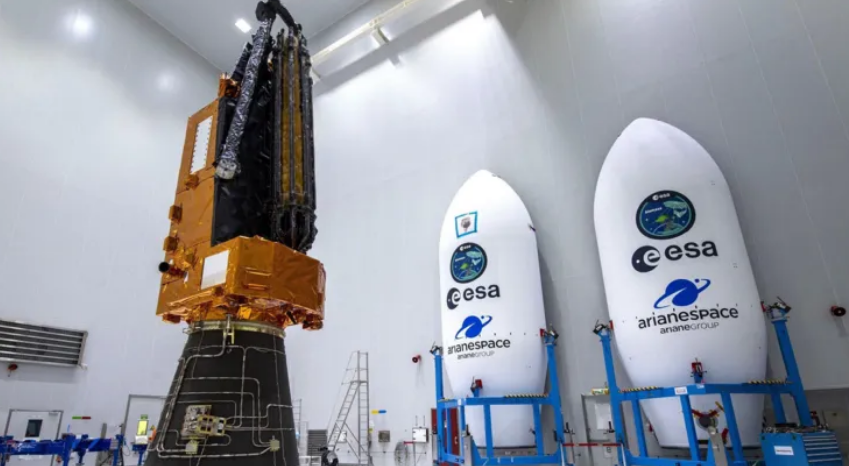A groundbreaking satellite launched by the European Space Agency (ESA) on Tuesday is expected to revolutionise the way scientists measure carbon stored in Earth’s rainforests, providing critical data in the fight against climate change.
The satellite, launched from ESA’s Kourou spaceport in French Guiana, carries a 12-metre antenna designed to peer beneath dense forest canopies using long-wavelength P-band radar. Nicknamed the “space brolly,” the spacecraft will orbit the Earth, scanning vast rainforest regions including the Amazon, Congo, and forests in Southeast Asia.
Rainforests, often described as the “lungs of the Earth,” play a vital role in absorbing planet-warming carbon dioxide. However, accurately measuring the carbon they store has long been a scientific challenge due to the complexity and scale of tropical forests, which contain more than 1.5 trillion trees.
“This mission marks the first time we will be able to accurately determine the amount of carbon stored in the woody biomass of the world’s major rainforests,” said Prof. John Remedios, director of the UK’s National Centre for Earth Observation, which proposed the idea to ESA. “We can finally look inside these forests—not just at the canopy, but into the trunks and branches where most of the carbon resides.”
Unlike traditional radar systems, which only scan treetops, the satellite’s long-wavelength radar can penetrate through leaves and branches to detect the denser structures beneath. It will perform repeated scans, creating cross-sectional images similar to a CT scan, to build detailed maps of forest biomass.
The data will provide a reliable estimate of how much carbon is stored—and how much is being lost through deforestation—on an annual basis. The satellite was built in the UK with significant contributions from European and American partners. Prof. Shaun Quegan from the University of Sheffield, who conceived the mission, called it “the result of decades of work by some of the world’s top scientists and engineers.”
Dr. Ralph Cordey from Airbus, which oversaw the satellite’s construction, likened the deployment of the massive antenna to “unfurling an umbrella in space.” The engineering challenge involved help from U.S.


